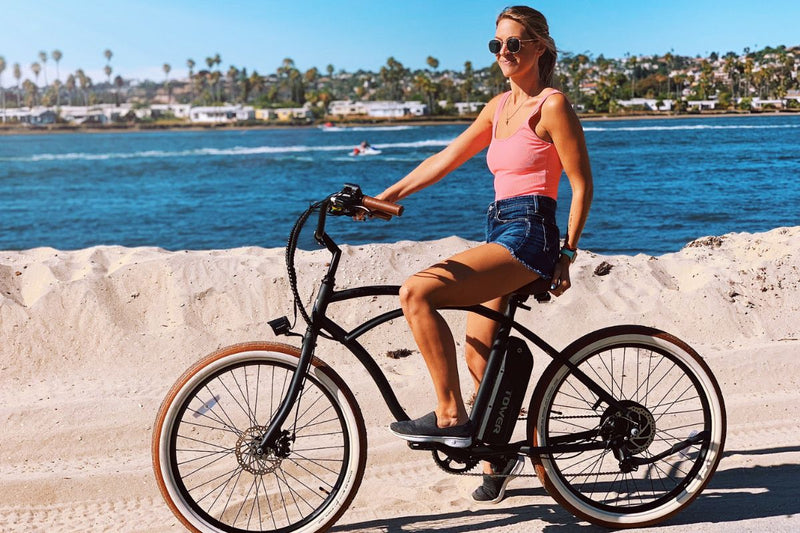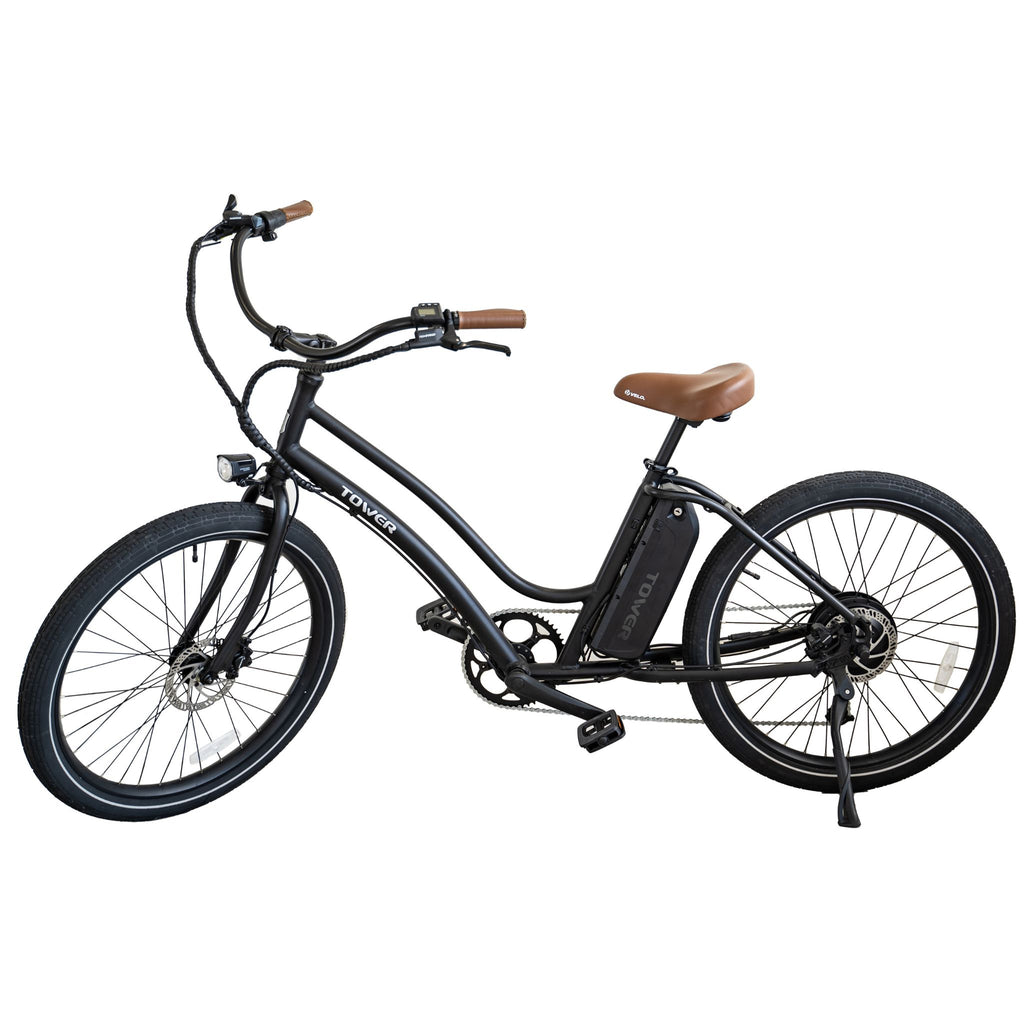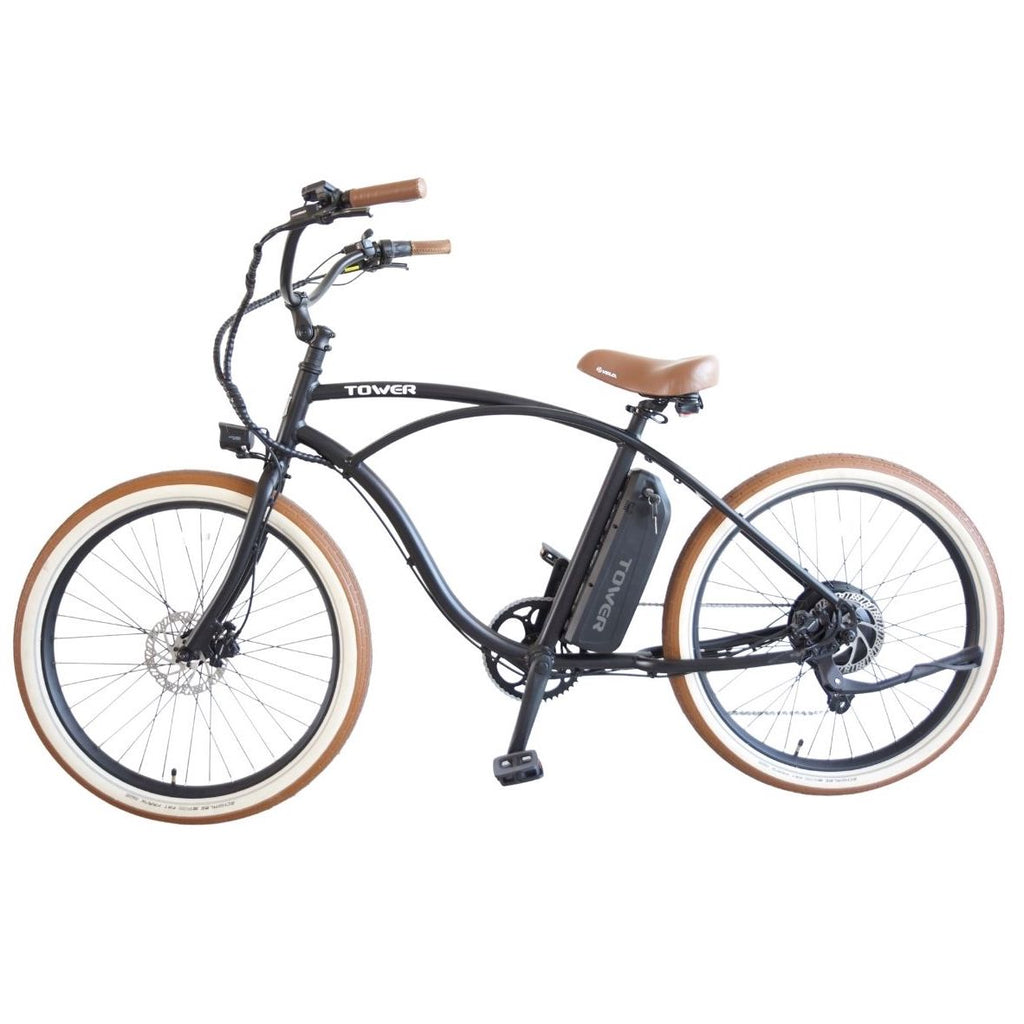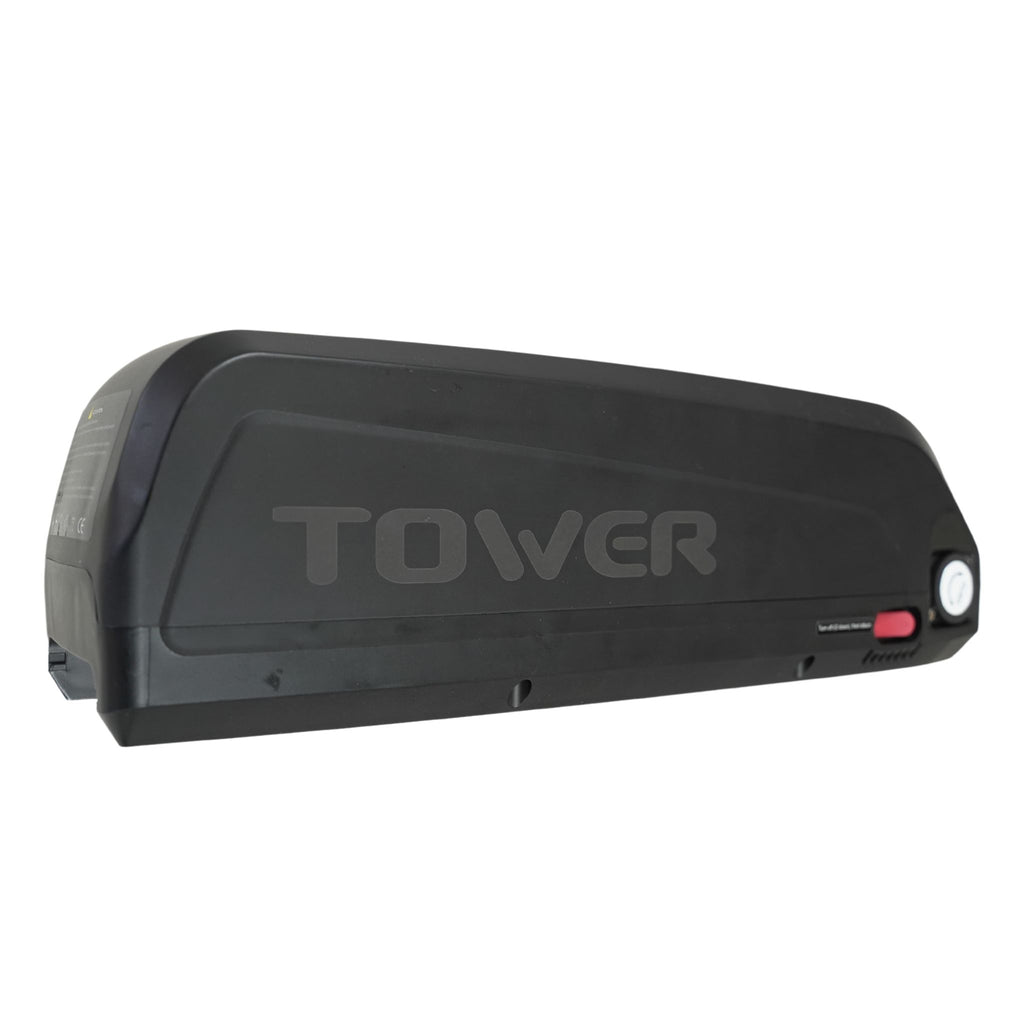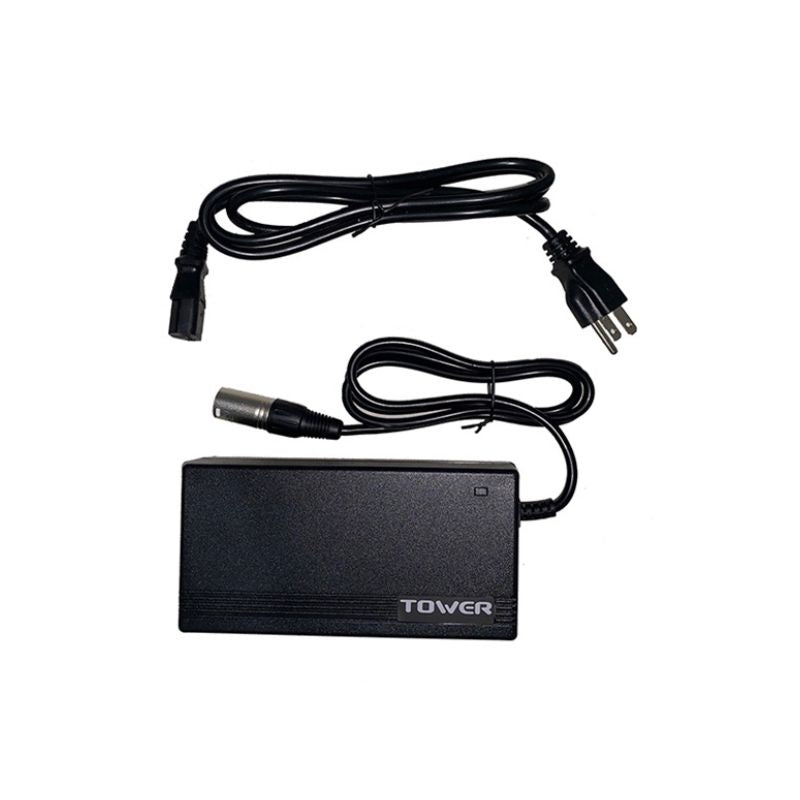We are going to be checking and detailing how the electrical system of an e electric bike works. We will be using our very own Tower electric cruiser bike to help demonstrate. Our ebike was designed to have a very modular and simple system, where components are very plug-and-play and can be easily snapped together and quickly replaced if needed. This also makes troubleshooting very easy by isolating the modular components in the process of elimination. This make our electric bike the perfect model to illustrate how an electric bicycle works.
Electrical Components on an eBike
Unlike traditional bikes, electric bikes have a motor which gives the bike power and pedal assist. On our electric beach cruisers, the motor is located inside the frame fo the back tire, meaning it is a hub motored bike.
The motor is connected by a cable that goes into the ebike controller, which acts as the onboard computer in the bicycle and regulates the electronic functions of the bike. Think of the controller as the brain of the bike. Everything runs through the controller. To learn a bit more about the controller read our article detailing how an electric bike controller works. On the Beach Bum, which has a standard battery-mounted controller, the controller is located on the right side of the bike and just underneath the chain.
The controller is also connected to the main power source, or the electric bike battery. Additionally, the controller is also connected to the pedal assist sensor and the speed sensor located behind the right crankset.
The cables from the controller also lead up to the handlebar where they split into two. To the left, it is connected to the LCD controller and left brake lever. And to the right, it connects to the throttle and right brake lever.
How it Works
As previously mentioned, the controller is the onboard computer, and thus it is the brain of the ebike. The battery, meanwhile, is what you can think of as the heart. To put it simply, the controller takes all the input from the input and the power from the battery and directs it to the essential functions of the ebike. The controller recieves the users movements, ie. pedaling or using the throttle, and dictates the power from the battery to the motor.
To demonstrate, when we turn on the ebike, we give the controller the command to draw power and allocate it to the LCD screen to turn on. In like manner, this is also what happens when we select a pedal assist level and start riding the bike; it directs power into the motor, and it can also shut any power going to it when we trigger the brake levers.









